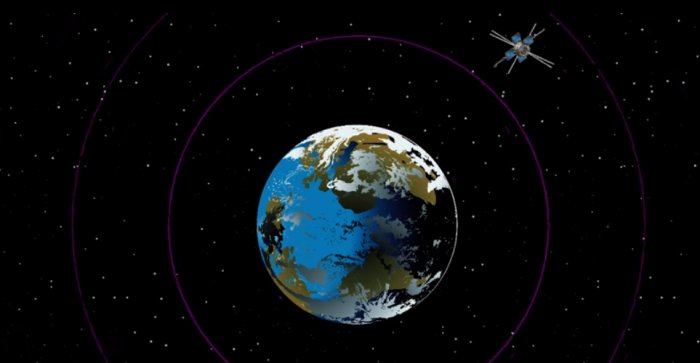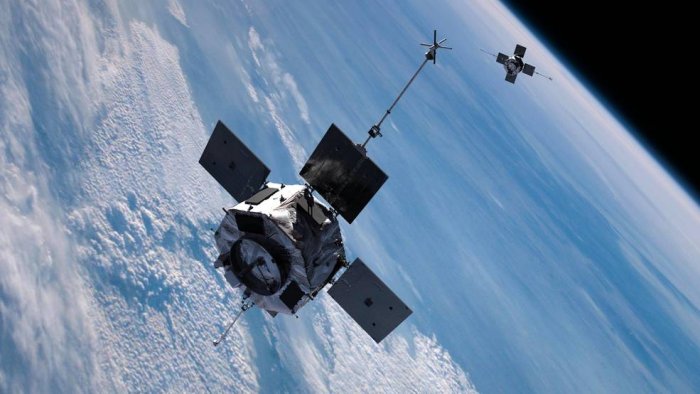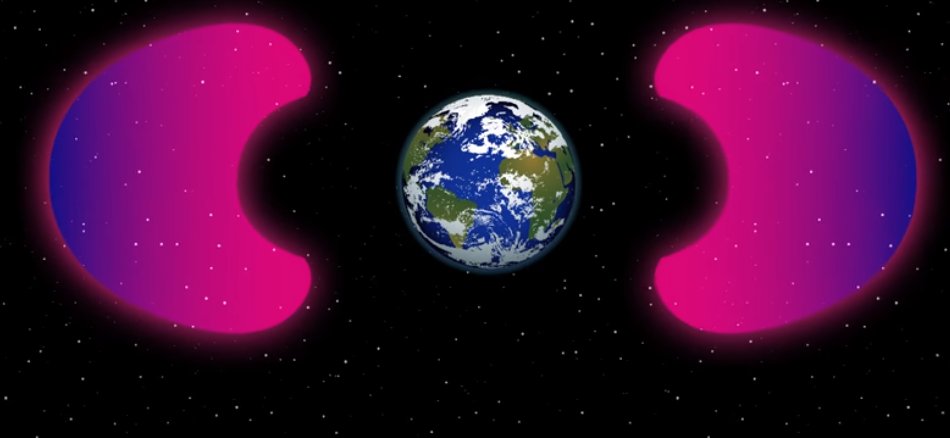MessageToEagle.com – Astronomers have discovered a huge man-made bubble around Earth. So, how was it formed and why is it there?
Humans have long been shaping Earth’s landscape, but now we’ve discovered that we have the potential to shape our near-space environment as well.
The man-made barrier we created is not a bad thing as it offers effective protection against natural particle radiation in space.

The bubble was formed by very low frequency waves (VLFs). VLFs interact with particles in space and affect how and where they move. VLFs are used for radio communication, including submarines because they can penetrate deep into the ocean.
While these waves are intended for communications below the surface, they also extend out beyond our atmosphere, shrouding Earth in a VLF bubble.
This bubble is even seen by spacecraft high above Earth’s surface, such as NASA’s Van Allen Probes, which study electrons and ions in the near-Earth environment.

Space weather is the source of aurora that shimmer in the night sky, but it also can disrupt satellites, cause power grid failures and disrupt GPS communications. The Van Allen Probes help scientists to understand this region and to better design spacecraft that can survive the rigors of space.
See also:
Cosmic Danger – A Supernova Within 50 Light Years Would Kill Life On Earth
Cosmic Mystery – What Happened To Earth’s Second Moon?
Mystery Of Planet V – Was There Once A 5th Planet Between Mars And The Asteroid Belt?
The probes have noticed an interesting coincidence — the outward extent of the VLF bubble corresponds almost exactly to the inner edge of the Van Allen radiation belts, a layer of charged particles held in place by Earth’s magnetic fields. Dan Baker, director of the University of Colorado’s Laboratory for Atmospheric and Space Physics in Boulder, coined this lower limit the “impenetrable barrier” and speculates that if there were no human VLF transmissions, the boundary would likely stretch closer to Earth.
Indeed, comparisons of the modern extent of the radiation belts from Van Allen Probe data show the inner boundary to be much farther away than its recorded position in satellite data from the 1960s, when VLF transmissions were more limited.
“A number of experiments and observations have figured out that, under the right conditions, radio communications signals in the VLF frequency range can in fact affect the properties of the high-energy radiation environment around the Earth,” said Phil Erickson, assistant director at the MIT Haystack Observatory, Westford, Massachusetts.
Understanding how VLFs shape our environment in space we can learn how to protect our satellites from dangerous natural radiation in space. Plans are already underway to test VLF transmissions in the upper atmosphere to see if they could remove excess charged particles — which can appear during periods of intense space weather, such as when the sun erupts with giant clouds of particles and energy.
MessageToEagle.com
Expand for references







